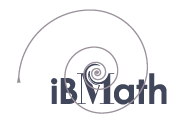セミナー Professor Basil Grammaticos (2014.11.06)
日時: 2014年11月6日(木曜日)14:00〜
場所: 数理科学研究科棟(駒場) 056号室
演者: Professor Basil Grammaticos
所属: IMNC, Univ. Paris 7 & Paris 11, CNRS, France
専門: 離散可積分系,離散数理モデル
Seminar 1:
Title: Improving the time-machine: estimating date of birth of grade II gliomas
Abstract:
Here we present a model aiming to provide an estimate of time from tumour genesis, for grade II gliomas. The model is based on a differential equation describing the diffusion–pro- liferation process. We have applied our model to situations where tumour diameter was shown to increase linearly with time, with characteristic diametric velocity. We show that the estimate of tumour onset obtained from extrapolation using a constant velocity assumption, always underestimates biological tumour age, and that the correction one should add to this estimate is given roughly by 20/V (year), where V is the diametric velocity of expansion of the tumour (expressed in mm ⁄ year). Within the assumptions of the model, we have identified two types of tumour: the first corresponds to very slowly growing tumours that appear during adolescence, and the second type corresponds to slowly growing tumours that appear later, during early adulthood. That all these tumours become detectable around a mean patient age of 30 years could be interesting for formulation of strategies for early detection of tumours.
Seminar 2:
Title: An oedema-based model for diffuse low-grade gliomas under radiotherapy
Abstract:
We present a model for the effect of radiotherapy on patients with low-grade gliomas. We use a migration-proliferation model complemented by an equation describing the appearance and draining of oedema. We argue that the latter effect accounts for the observed delayed onset of tumour regrowth after the end of radiotherapy. We analyse the role of the model parameters and show that it is possible to reduce them to just three effective ones. Using our model, we are able to fit in a robust way the data of the evolution of the tumour radius along time, of a population of 27 patients. We argue that, within reasonable assumptions, it is possible to obtain estimates for the parameters of the model allowing to predict the possible gain in lifetime due to radiotherapy, and thus assess beforehand its usefulness.

